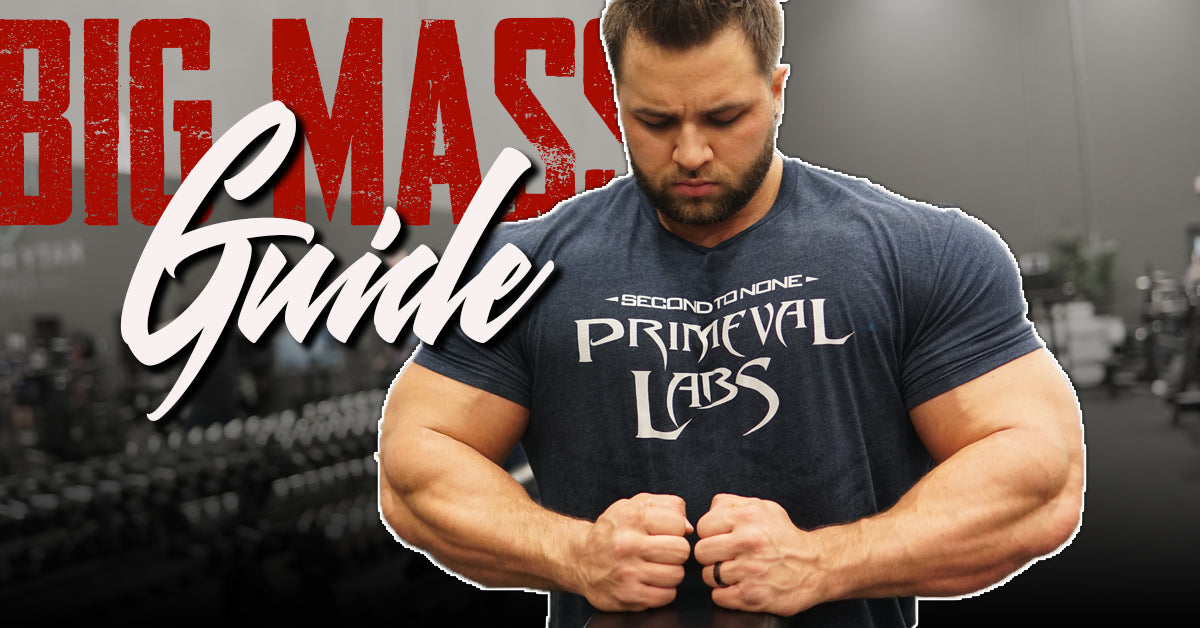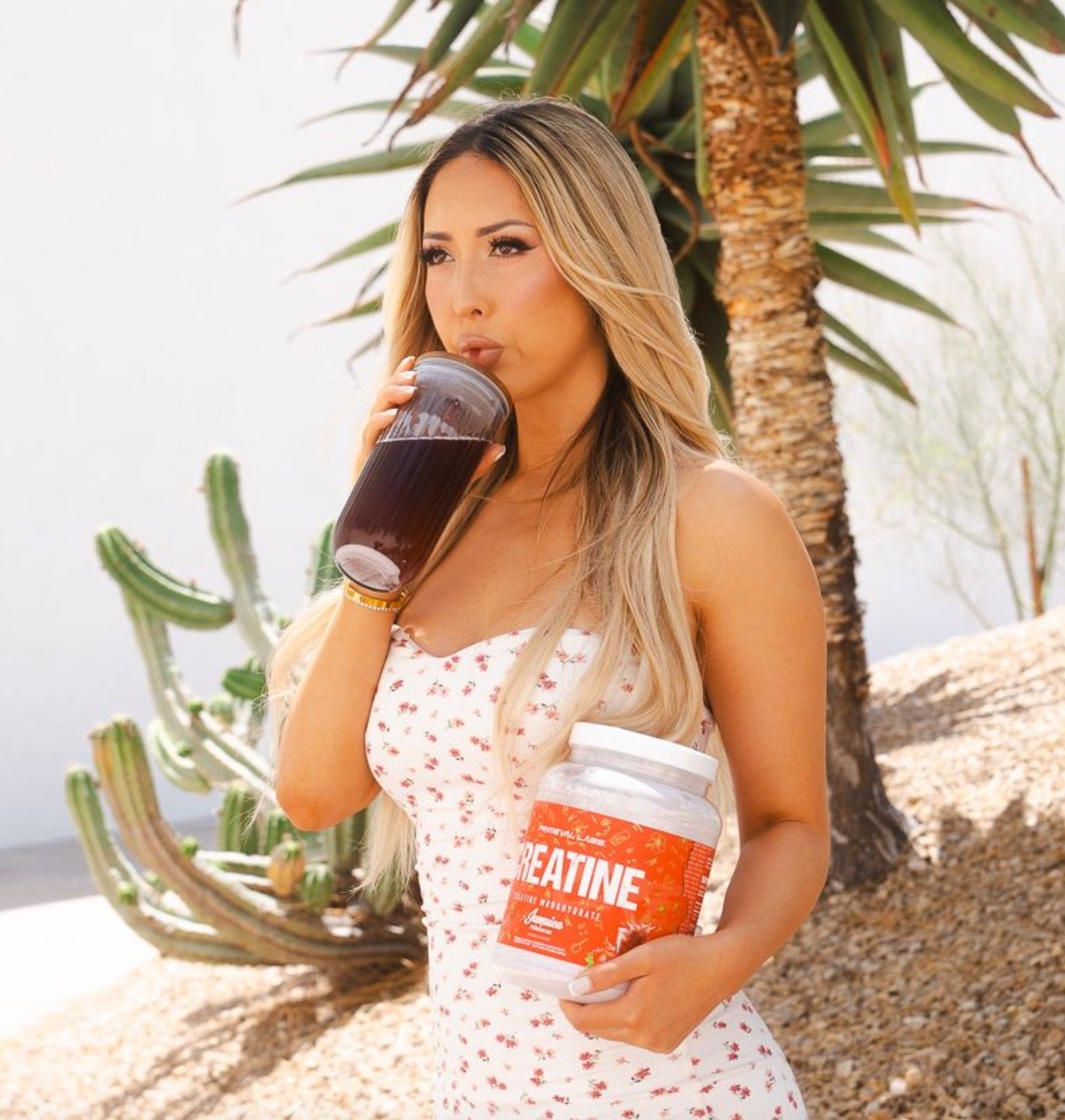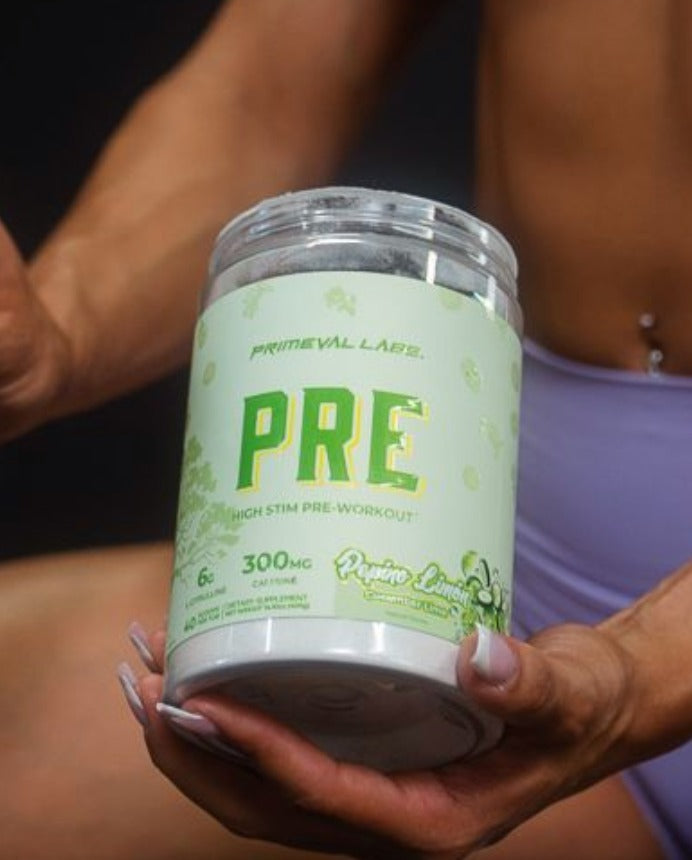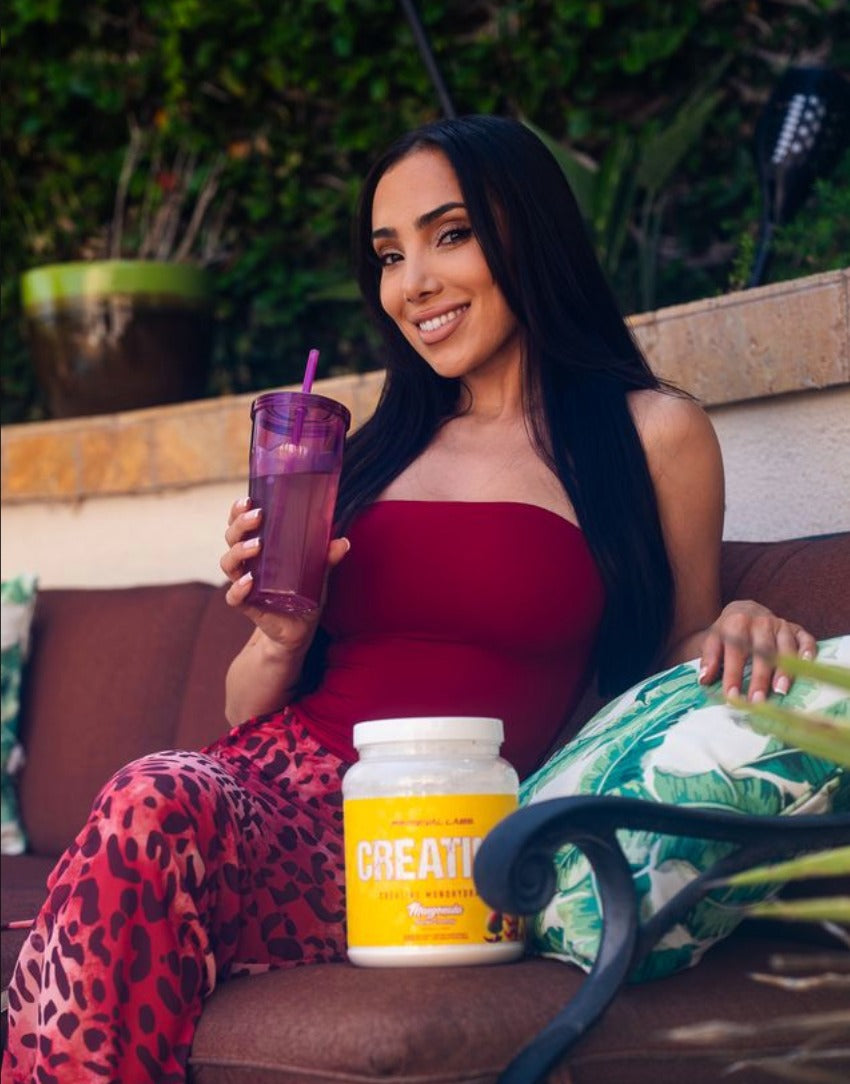If you want to know how to build muscle as fast as possible without gaining fat or having to carry around a cooler full of prepared meals consisting steamed chicken, rice, and broccoli, then you want to read this article.
Muscle mass is a key determinant in longevity. Therefore, if you intend to live a long, healthy, and functional life, you want to build as much muscle as you possibly can during your prime mass gaining years.
SUGGESTED PRODUCTS
Unfortunately, there’s a lot of myths and broscience out there when it comes to effectively and efficiently gaining mass.
We’re here to dispel the myths and bring the truth to light.
Here’s the simple truth when it comes to getting massive, jacked, and tan in 2019:
- You don’t need to constantly change up your workouts each week
- You don’t need to dirty bulk
- You don’t have to follow any ridiculous eating plans or tedious meal timing protocols
Building muscles as quickly as possible while avoiding unwanted fat gain entails five key concepts:
- Eat slightly more calories than you burn consistently.
- Consume enough protein and carbohydrates to support recovery and growth.
- Lift heavy weight and follow the principles of progressive overload.
- Get enough sleep.
- Supplement where necessary
That’s it.
No gimmicks, no frills, no fluff.
Just honest, hard work, commitment, and dedication.
Now, here’s how to do it.
Nutrition to Gain Lean Muscle Mass
Diet and training have a very synergistic relationship when it comes to hypertrophy.
Resistance-training provides the stimulus for your muscles to grow bigger and stronger, while nutrition dictates whether or not your grow significant amounts of muscle.
Many lifters like to ask which is more important training or nutrition, and the answer (while you might not like it) is that BOTH matter.
You could have the most perfectly optimized training program in the world, but if that training isn’t supported by a properly constructed diet, you will not gain muscle mass.
On the flip side, if you consume a surplus of calories but do not train consistently or follow the principles of progressive overload, those extra calories turn into excess body fat rather than lean muscle mass.
Therefore, getting big and gaining mass requires both intense training and diligence with your nutrition.
So, what should the nutrition plan (diet) look like for an individual trying to gain mass?
Despite what you may have read on various “fitness” blogs, calories in vs calories out matters.
What we mean is this -- if you want to gain mass as effectively and efficiently as possible, then you have to be in a positive energy balance.
In other words, you must consume more energy than you expend daily.
Do this day after day, week after week, and you will gain weight.
Therefore, before we start getting into macronutrient ratios, amount of calorie surplus, meal-timing, or any things else, you need to get an estimate of how many calories your body currently burns.
To get that estimate, you need to know your TDEE.
Now, there are a lot of TDEE calculators on the internet, many of which do a fair job of estimating your daily maintenance calories within 100-200 calories. And, it’s important to remember, that any calorie needs calculator you come across provides an estimate at best, it is not 100% accurate all the time for every person.
But, that’s ok.
All we need is a rough idea of where to start with calorie intake and we can adjust things week to week by tracking progress with a tape measure, bodyweight scale and progress pics.
So, to get an estimate of the number of calories you need on a daily basis to maintain your weight, we recommend reading this article on calculating TDEE, which walks you step-by-step through the process of calculating your estimated TDEE.
Once you have this number in hand, eat at this level for 1-2 weeks consistently and track your weight. If your weight stays roughly the same during this time, then you have your maintenance calories. If you lose weight during this time, you are eating less than your TDEE. And, conversely, if you gained a significant amount of weight during this time, you are eating more than your TDEE and are consuming a surplus of calories.
Once you have your maintenance calories figured out, the next question is:
How large of a calorie surplus should I consume to maximize muscle growth and limit fat gain?
While the old mass gaining advice used to be that you should eat a very large surplus in order to build muscle as quickly as possible, the research tells a different story. The truth is, the amount of calories you need to eat above maintenance to sufficiently support mass gaining isn’t nearly as big as you’ve likely been led to believe.
In reality, most individuals looking to gain mass while avoiding excessive fat gain only need to eat 10-15% above their TDEE. This amount provides enough extra calories to support the muscle building process while not so many that you’re piling on pounds of unwanted body fat.
For more proof that you don’t need to follow the old “see food, eat food” diet advice from the bros of yesteryear, consider a 2013 study by Garthe et al. that investigated the effects of nutritional intervention in elite athletes undertaking a mass gaining phase.
For the study, had one group eat ad libitum while the other group received nutritional counseling and consumed a fairly aggressive calorie surplus (~500 kcal per day above maintenance).
At the end of the trial, both groups gained lean mass, but the group consuming the larger calorie surplus also gained 5x more body fat than the group that consumed a smaller calorie surplus and ate ad libitum.[1]
So, what does this tell us?
Essentially, larger surpluses DO NOT lead to significantly more and/or better muscle growth in well-trained individuals.
A case could be made for individuals who are new to lifting. Novice lifters can experience “newbie gains” and may benefit from larger calorie surpluses as their potential to build greater amounts of muscle in a relatively short period of time is higher than individuals who have been training consistently for several years.
As such, when it comes to gaining mass, but not gaining truckloads of fat, consider this recommendation from renowned natural bodybuilder and powerlifter Eric Helms, PhD:
Dr. Helms has been said that for natural lifters they should expect to gain weight at roughly 1% of the bodyweight per month. This rate of weight gain allows for adequate amounts of muscle growth while limiting fat gain.
For most lifters, this translates to roughly 0.25-0.5 lb per week.
Therefore, during mass gaining phases you want to consume a calorie surplus that has you gaining between 0.25-0.5 pounds per week. For the average trainee, this is somewhere in the neighborhood of 10-15% above maintenance (or ~250-300 calories above maintenance).
As an example, let’s say your TDEE is 2500 calories, your initial bulking daily calorie goal should be:
- 2500 calories * 1.10 (10% above maintenance) = 2750 calories
You would consume this amount of calories for 2 weeks, and if at the end of two weeks you have not gained at least one pound of bodyweight, you would add in another 100 calories and assess progress.
If you find that you are gaining more than one pound per week, remove 100 calories from your daily intake.
Determining the ideal number of calories to consume while bulking is highly individualistic and may vary greatly between two individuals even if they have relatively similar heights, weights, and amounts of lean mass and fat mass.
The only way to know the right amount of calories to consume when bulking for YOU is to track your daily intake and document your progress.
Now, let’s turn our attention to the massive dirty bulk...
3 Reasons to Avoid Dirty Bulking
Let’s say for a second that you want to adopt the traditional dirty bulk where you’re consuming between 500-1000 extra calories per day (or more). And, let’s also assume that you’re ok with adding a bunch of extra body fat because you believe that in order to maximize your muscle building potential you need to go ham at the buffet.
After all, what’s the worst that could happen?!
You spend a few extra weeks dieting after your massing phase to burn off the excess goo around your midsection and that’s it, right?
Wrong.
You see, when you adopt an overly aggressive calorie surplus at which point you’re gaining more than 0.5-1 lb per week, there’s three big things to be concerned about:
As body fat increases:
-
Insulin sensitivity declines[1]
As most of you reading this probably know, insulin is the body’s primary nutrient shuttling hormone that picks up glucose and other nutrients from the bloodstream and shuttles them into cells (including muscle and fat cells).
As you gain body fat, insulin sensitivity drops, which has several downstream effects including: reduced fat burning, decreased muscle protein synthesis, and increased risk of further fat gain.[2,3,4]
-
Testosterone levels drop[5]
Testosterone is the primary anabolic hormone in the body, which is why it’s so synonymous with muscle building.[6] Excessive body fat leads to a drop in testosterone levels, which directly affects your ability to synthesize muscle tissue effectively.
-
Estrogen levels increase[5]
Estrogen is another important hormone in the body, and while it’s most often associated with women (due to its role as the primary female sex hormone), men need some estrogen for overall health and wellness.
However, too much estrogen promotes fat storage and negatively impacts testosterone levels.[7]
Suffice it to say that in no way, shape, or form does it behoove the natural lifter to dirty bulk and gain a bunch of body fat while gaining muscle.
Gaining excessive amounts of body fat during mass gaining phases reduces your muscle building potential, accelerates fat gain, and makes your inevitable journey to lose the excess body fat that much harder.
Now, that the case for dirty bulking has hopefully been put to rest once and for all, let’s get back on track with a discussion concerning appropriate macronutrient goals for massing.
Macronutrient Recommendations for Gaining Mass
Protein
Generally speaking, protein is the most important macronutrient there is when we’re discussing body composition and performance.
As such, when we set out to determine our macronutrient goals for bulking, protein should receive top priority and be the first macronutrient defined.
While you’re likely to read all sorts of recommendations of how much protein you should eat when bulking, the preponderance of the evidence indicates that resistance-training athletes need to consume between 1.6-2.2g/kg/day of protein, which comes out to ~0.8-1 gram per pound of bodyweight.[8,9]
If you want to consume more protein (for instance, if you enjoy eating large amounts of protein), you are more than welcome to do just that, so long as you understand that consuming higher amounts will confer no extra benefit in terms of enhancing size gains.
Fat
Fat has experienced a rebirth of sorts the past few years after spending much of the previous decades being unfairly demonized. As such, it’s quite common for fitness gurus to espouse the benefits of a high fat diet and denounce carbohydrates as useless insulin-spiking, fat-gaining ne’er-do-wells.
While fat is not to be feared, at the same time there is no need to unfairly demonize carbohydrates either.
In other words, just because the narrative on fat has changed recently doesn’t inherently mean that carbohydrates are now off-limits.
Anyway…
Daily fat intake should be set somewhere in the range of 0.3-0.6g per pound of bodyweight.
Consuming 0.3 grams is the minimum requirement and provides your body with everything it needs to maintain overall health and proper function. It also leaves a larger amount of calories to be allotted for carbohydrates (more on that in a second).
That being said, fat intake can be shifted up slightly higher to 0.5-0.6 depending on your individual preferences, satiety, and tolerance.
Carbohydrates
Once protein and fat minimums have been established, the rest of your calories can be devoted carbs.
So, let’s continue with the example we outlined above and say that you weigh 170 lbs and your TDEE is 2500 calories. We’ve already calculated that your starting calorie intake for massing is around 2750 calories.
To figure out your carbohydrates, you first need to satisfy your protein and fat minimums.
Here’s how to do it:
Set protein at 1 gram per pound of body weight.
Protein = 170g
We multiply 170 by 4, since there are 4 calories in every gram of protein. This yields:
170 * 4 = 680 calories
Next, we need to set fat macros, which in this case we’ll use 0.3g per pound of body weight.
Fat = 0.3g/lb * 170 lbs = 51g
We now multiply 51 by 9 since there are 9 calories in every gram of fat. This gives:
Calories from fat: 51 * 9 = 459 calories
To figure out carbohydrates, take your daily intake (2750 calories) and subtract your protein and fat calories:
2750 - 680 - 459 = 1611 calories of carbohydrates
In order to figure out how many grams of carbohydrates you should eat per day, we take 1611 and divide it by 4 since there are 4 calories per gram of carbohydrate. This gives:
1611 / 4 = 402.75g
Based on these calculations, you start your bulking diet with a macronutrient split of the following:
- Protein: 170g
- Fat: 51g
- Carbohydrate: ~402g
Now, a great many of you probably blew a gasket when you say the tremendous amount of carbohydrates you will have to eat on a daily basis and immediately thought of insulin resistance, type 2 diabetes, and every other horrible thing you’ve heard attributed to consuming carbohydrates from low-carb pundits.
On the other hand, an equal number of you probably threw your hands in the air and started dancing in your chair at the prospect of getting to pound back bowlfuls of cereal, oatmeal, and ice cream.
Now, here’s where the give and take of macronutrients comes into play, specifically regarding fat and protein.
During your massing phase, protein will remain relatively constant. However, if you find that you function better with a bit higher fat or your body doesn’t handle carbohydrates all that well, than you can lower the carbohydrate amount and increase fat.
At the same time, there are several reasons why you should consider going the high-carb route when looking to gain muscle mass as quickly as possible.
Allow us to explain…
A Case for High-Carb Bulking
Choosing to embrace carbohydrates and adopt a high-carb approach to gaining muscle and strength benefit you in a number of ways[10,11]:
Carbohydrates Promote Protein Synthesis
First, carbohydrates promote net protein synthesis.
In order to build muscle effectively, protein synthesis must outpace protein breakdown on a daily basis. Each day that your body builds more protein than it breaks down means muscle gain.
Carbohydrates primarily encourage net protein synthesis by reducing whole-body protein breakdown.
Meals that lack carbohydrates (glucose) require gluconeogenesis (the process by which the body creates its own glucose from protein and glycerol) to produce the necessary glucose needed for the creation of various cell elements, such as membranes, matrix, ribose, and bases.
As a result, when meals do not contain carbohydrates but contain adequate amounts of protein and fat they retain less nitrogen than a meal containing both protein and carbohydrate.[12]
Since nitrogen balance is a key factor in net protein synthesis, it stands to reason we want to do everything in our power to maintain a positive nitrogen balance and net protein synthesis.
You do this by consuming carbohydrates.
Increased Insulin Production & Glycogen Availability
When you eat carbohydrates your pancreas secretes insulin to take glucose and other nutrients from the blood and shuttle it into your muscles. The more glucose-containing foods (i.e. carbs) you eat the more insulin your body will produce.
For resistance-training individuals looking to gain mass, this is not a bad thing.
You see insulin is incredibly anti-catabolic, meaning it combats muscle protein breakdown.
It also enhances glycogen replenishment.
Why is this important?
Glycogen is the stored form of glucose that your muscles access for energy during high-intensity exercise such as heavy resistance-training or sprinting. The more glycogen you have, the greater capacity you have to train at a high level for longer periods of time.
So in this sense, glycogen can help you build muscle.
But there’s more…
Enhanced Recovery
Your ability to train effectively, overload your muscles, and ultimately grow depends on how well you recover in between your bouts of training.
You are only in the gym for 60-90 minutes at most, that leaves 22-23 hours of the day that your body is spending on recovery and (hopefully) growth.
Therefore, you should be devoting as much (if not more) time, attention, and effort to your recovery as you do to training.
Carbohydrates enhance recovery.
When you choose to eat low-carb, glycogen levels are slower to refill, which may not seem like a big deal, but it does have several noteworthy downstream effects, which can hinder or stunt mass gain.
Namely, low glycogen levels are associated with overtraining, increased cortisol levels and decreased testosterone levels.[13,14]
Additionally, low carbohydrate diets reduce insulin secretion, which as we just mentioned above has important ramifications for limiting protein breakdown. Since muscle growth is dependant on maintaining a net positive protein synthesis, we should want to take advantage of insulin’s potent anti-catabolic properties as they indirectly support muscle growth.[15,16]
Consuming higher amounts of carbohydrates helps to maintain high levels of muscle glycogen levels, which enhances various genetic signals in the body related to muscle repair and growth.[17]
The Takeaway on Macros for Mass Gain
- Use a modest calorie surplus (10-15% above TDEE)
- Massive calorie surpluses don’t lead to better mass gains, just additional fat gain
- Consume 1g/lb of protein per pound of bodyweight
- Set fat at 0.3g/lb of bodyweight
- Devote the rest of your calories to carbohydrates, which for most people comes out to between 1-3 grams of carbs per pound of body weight.[18]
Common Nutrition Questions When Bulking to Gain Mass
How Fast Should I Gain Weight to Limit Fat Gain and Maximize Muscle Growth?
As we stated above, you want to consume enough calories to the point where you are gaining a maximum of 1-2% of your bodyweight per month. For most lifters, this comes out to roughly 0.5-1 pound per week.
If you are gaining more than 1 pound per week, there is a very good chance you’re gaining unnecessary body fat. Consider reducing your daily intake by 50-100 calories per day to slow your rate of weight gain.
Can I Only Absorb 30 grams of Protein at a Time?
This is one of the oldest myths around in the weight lifting world, and it’s high time we put it to rest.
Simply put, there is no “maximum amount of protein” the body can digest at one time. It just doesn’t make sense.
It’s not as if your body digests protein up to a certain threshold (such as 30g) and then immediately lets the rest pass through the GI system undigested. Your body will digest all of the protein you eat, even if it’s more than 30 grams. It’s just that all of that protein might not go to building more muscle at that point in time.
Side note, this is why it’s important to distribute your protein intake throughout the day, especially if you want to build muscle and strength as quickly as possible.
So, what happens to the protein you eat then if it’s not all going to muscle?
Well, since your body does not store amino acids like it does carbohydrates and fatty acids, the stomach holds some of the amino acids for a little bit of time, but any aminos not immediately used for repairing and growing muscle tissue will be put to use in other ways, such as building neurotransmitters or proteins in other tissues of the body not directly associated with skeletal muscle.[19,20]
After eating a meal packed with protein, some of that protein will go to build muscle, some of it will go build other structures in the body (proteins, neurotransmitters and more) and the rest of the protein is used for energy or converted to body fat. Any leftover nitrogen remaining from the excess protein will combine with other compounds to form urea, which is subsequently excreted in the urine.[21]
Is the “Anabolic Window” Real?
Much like the previous point, the “anabolic window” is a concept deeply ingrained in the annals of broscience and has been the subject of great confusion, fascination, and debate amongst trainees, coaches, and sports scientists.
Traditionally, the “anabolic window” referenced the time immediately post-workout (30-60 minutes after your last set) when the body was in a state of heightened insulin sensitivity. During this time, it was “absolutely essential” to pound a protein shake along with some fast digesting carbohydrates so as to capitalize on this heightened anabolic state. Failure to do so would essentially mean that you wasted your workout and all of your diligent effort training was for naught.
However…
Recent research has shed some much needed light on this subject matter and by and large, for the average person training one time per day, the “anabolic window” is more like an “anabolic barn door.”
What this means is that no longer do you need to pound the whey protein isolate immediately after your last set of curls, especially if you’ve had a mixed meal an hour or two prior to training.
Therefore, if you had a proper pre workout meal and then trained 90-120 minutes later, your body is still absorbing and using the nutrients from that meal during and immediately after your workout. As long as you get in another meal within 2-3 hours after you are done training, you don’t have to worry about “wasting” your workout or losing a ton of muscle mass.
Now, if you trained in a fasted state (more on this in a second), it would behoove you to get some high quality protein and carbohydrates in your system sooner rather than later, but as we’ll discuss further down, it’s far more important that by the end of the day you hit your protein and calorie intake goals than whether or not you ate something the second you dropped the weights.
Now, there are some exceptions…
If you are an athlete competing in multiple events or training several times in a single day, nutrient timing does become important, specifically in regards to replenishing muscle glycogen.
If you are deep into a cut (say for a physique competition), having some protein immediately before and after training would be very good practice to help preserve lean muscle mass in the midst of calorie restriction.
And furthermore, while we’re on the subject of meal timing...
Is Meal-Timing Important?
Another common talking point when it comes to muscle building is that you need to eat small meals every 3 hours to keep your metabolism stoked and prevent your body from going catabolic.
Unfortunately, this is another talking point that has largely been blown out of proportion by the gym bros.
The truth is, the frequency of your protein intake doesn’t matter nearly as much as ensuring you consume enough protein each and every day.
And don’t worry about going catabolic, losing all of your gains, etc. if you don’t eat protein every three hours.
Basically, if you like to eat only 2 or 3 times per day, that’s fine so long as you get in all of your protein in those few meals.
That being said, the reason many people advocate multiple feedings is that some individuals have very high calorie requirements when massing, and it becomes rather uncomfortable to try and cram 4000+ calories (including 180-200g of protein) in only 2 or 3 meals.
The takeaway here is that total daily calories and protein intake (1g/lb) are the most important things to be concerned with when gaining mass.
If you want to “optimize” things in favor of maximizing muscle growth potential, then you should consider having multiple protein feedings spread evenly throughout the day (every 3-4 hours) with each meal containing a maximum of 0.55g/kg of protein per meal.[9]
“Based on the current evidence, we conclude that to maximize anabolism one should consume protein at a target intake of 0.4 g/kg/meal across a minimum of four meals in order to reach a minimum of 1.6 g/kg/day. Using the upper daily intake of 2.2 g/kg/day reported in the literature spread out over the same four meals would necessitate a maximum of 0.55 g/kg/meal.”[9]
And, you may also want to consider consuming 30-40 grams of protein right before bed, as research indicates it may be beneficial to boost overnight anabolism and recovery.[9,23,24]
Should I Train Fasted?
For years bodybuilders have promoted the idea that the most effective way to lose weight and burn body fat is to train fasted.
You see, when you are fasted, insulin levels are low, which is also when your body relies mostly on stored body fat for energy. The thinking for quite a while has been that training in this low-insulin, fasted state resulted in greater fat burning, and ultimately greater weight loss than training with food in your system. As having food in your system, means that insulin levels are elevated, reducing fat burning, and relying primarily on the food you just ate for energy rather than relying on stored body fat.
Seems to make sense, right?
Well, the research has shown otherwise.
In the now famous study by Schoenfeld et al. examining the effects of fed versus fasted cardio, researchers noted that raining fasted resulted in no greater fat loss than training fed.[25] However, that same study also suggested that training fasted may lead to greater loses in muscle mass.
On the flip side, there are multiple studies demonstrating that consuming a meal before training (even something as small as a whey protein shake) may lead to greater muscle growth than if that same meal was consumed post workout.
The reason for this, most likely, is that when fed, your ability to push harder for longer in your workouts is greater than training in a fasted state.[26]
Nutritional queries taken care of, now let’s get to training for gains!
Big Mass Transformation Training Program Overview
There’s no other way to say it, if you want to build muscle as quickly as possible, you are going to have to lift heavy weights with a fair amount of volume.
How heavy should do the weights need to be?
Generally speaking, the majority of your working sets should be with weights that are 70-85% of your 1-rep max (6-15 reps per set).
The best bodybuilders (natural or not) in history were strong. With greater strength comes greater muscle.
Therefore, you should base your exercise selection on those movements that allow for the greatest amount of overload. After all, mechanical tension is the primary driver of hypertrophy. Muscle damage and metabolic stress (“the pump”) can build muscle, but not quite as effectively as lifting heavy ass weight for reps.
This means that the majority of your training should be focused on getting stronger on compound movements, such as squats, deadlifts, bench press, overhead press, barbell rows, and pull ups.
These exercises recruit tremendous amounts of muscle and allow for the greatest overload.
If you’re not used to performing compound movements or feel uneasy about training with a barbell, hire a qualified strength and conditioning coach or personal trainer to teach proper form and execution. A little time spent learning and becoming proficient in these movements will pay tremendous dividends for long term gains.
Now when it comes to choosing how to structure your training, you can gain muscle with just about any program so long as you follow the principles of progressive overload.
That means in the grand scheme of things it doesn’t matter as much that you use an upper/lower split, full body routine, push/pull/legs, or even a bro split, as much as it matters that each time you train to make your muscles do more total work than they did the previous workout.
Doing more work means:
- increasing the number of sets, or
- reps performed within a set, or
- the amount of weight on the bar, or
- How many times you train a muscle group, or
- Performing the same amount of work in less time (i.e. increasing training density)
Any and all (or a combination) of these five things constitute performing more work.
To keep things simple, and ensure progressive overload, we’re going to employ a double progression system for training.
Double progression takes the guesswork about when to add weight to the bar. It’s simple, effective, and can be used by everyone regardless of experience.
Here’s how it works:
Pick a rep range with about 2-3 reps for your working sets.
For example, let’s say we’re doing a barbell back squat for 3 sets. We then select a rep range of 8-10 reps.
On your first set, let’s say you get 10 reps. On your second set, you get 9 reps, and your final set, you get 8 reps.
In your training journal, you would record this as 10 / 9 / 8.
Your next training session, you would keep the weight on the bar the same, and try to complete 10 reps on all three sets.
You do NOT increase the weight on the bar until you are able to get at least 10 reps on all three sets.
When you do complete 3x10 on the squat, then add 5-10 pounds and repeat the progression scheme.
Remember, the key to building muscle and strength as fast as possible is to keep progressing.
Double Progression allows you to easily track, monitor, and increase when appropriate, no guesswork needed.
Now, let’s get to the program!
Big Mass Transformation Training Program Overview
Getting bigger and stronger entails lifting heavy with enough volume to force muscle growth.
People often like to debate which is more important load or volume, and the answer is that both are needed.
The weight on the bar (load) has to be heavy enough to challenge the muscles and you have to perform enough volume to signal growth
Powerlifters can lift a lot of weight, but don’t have nearly as big of muscles as bodybuilders do. That’s because bodybuilders tend to do higher amounts of volume each week.
How much volume are we talking about?
Generally speaking, adequate volume to grow the major muscle groups lies in the range of 12-20 hard sets per week.
While there is research showing that total volume (weight * sets * reps) is more important for hypertrophy than frequency, the argument in favor of increasing frequency is that it allows you to get in more volume spread throughout the week which enables you to attack the increased volume with greater effort, intensity, and focus since you’re not devoting just one day to slamming a muscle group into oblivion.
As such, we’ll be hitting each muscle group at least 2x per week following an Upper / Lower / Push / Pull / Legs Routine.
An example of your weekly training schedule would look like this:
- Monday: Upper
- Tuesday: Lower
- Wednesday: Off
- Thursday: Push
- Friday: Pull
- Saturday: Legs
- Sunday: Off
Here’s the training program:
|
Upper Body |
Sets |
Reps |
Rest |
|
Bench Press |
4 |
6-8 |
2-3 min |
|
Barbell Row |
4 |
6-8 |
2-3 min |
|
Overhead Press |
3 |
6-8 |
2-3 min |
|
Pull Ups |
3 |
8-10 |
2 min |
|
EZ Bar Skullcrushers (superset with EZ Bar Curls |
3 |
8-10 |
0 min |
|
EZ Bar Curls |
3 |
8-10 |
60-90 sec |
|
Straight Arm Pulldown (superset with Face Pull) |
3 |
12-15 |
0 min |
|
Face Pulls |
3 |
12-15 |
60 sec |
|
Lower Body |
Sets |
Reps |
Rest |
|
Barbell Squat |
4 |
6-8 |
2-3 min |
|
Romanian Deadlift |
3 |
8-10 |
2-3 min |
|
Leg Press |
3 |
8-10 |
2 min |
|
Lying Leg Curls |
3 |
10-12 |
60-90 sec |
|
Walking Lunges** (time: 3 min) |
1 |
AMRAP |
2 min |
|
Hanging Leg Raises |
3 |
10-12 |
60 sec |
|
Seated Calf Raises |
3 |
12-15 |
60 sec |
**Perform as many bodyweight walking lunges as you can in 3 minutes, taking brief rest when needed. Aim to improve on this number each week.
|
Push |
Sets |
Reps |
Rest |
|
Dumbbell Bench Press |
4 |
6-8 |
2-3 min |
|
Seated Arnold Press |
3 |
8-10 |
2-3 min |
|
Incline Dumbbell Press |
3 |
8-10 |
2 min |
|
Cable Crossover |
3 |
10-12 |
1 min |
|
Cable Lateral Raises |
3 |
10-12 |
1 min |
|
Rope Pushdown |
3 |
8-10 |
60-90 sec |
|
Overhead Cable Extension |
3 |
12-15 |
60 sec |
|
Pull |
Sets |
Reps |
Rest |
|
T-Bar Row |
4 |
6-8 |
2-3 min |
|
Weighted Pull Ups |
3 |
8-10 |
2-3 min |
|
Seated Cable Row |
3 |
8-10 |
1 min |
|
Straight Arm Pulldown (superset with Face Pulls) |
3 |
10-12 |
0 sec |
|
Face Pulls |
3 |
10-12 |
1 min |
|
Barbell Curls |
3 |
8-10 |
90 sec |
|
Rope Hammer Curls |
3 |
10-12 |
60 sec |
|
Legs |
Sets |
Reps |
Rest |
|
Trap Bar Deadlift |
4 |
6-8 |
2-3 min |
|
Dumbbell Romanian Deadlift |
3 |
8-10 |
2-3 min |
|
Hack Squat |
3 |
8-10 |
1 min |
|
Leg Extension (superset with leg curl) |
3 |
10-12 |
0 sec |
|
Seated (or lying) Leg Curl |
3 |
10-12 |
1 min |
|
Cable Crunches |
3 |
10-12 |
60 sec |
|
Leg Press Calf Raises |
3 |
10-12 |
60 sec |
The Best Supplements to Help Gain Mass
Make no mistake you can build a lot of muscle without using any supplements whatsoever, including protein powder.
Eating enough food, training hard, and sleep enough each night are the three pillars of muscle building.
Nutrient timing, training splits, and supplements come AFTER those three things are in line.
That being said, since you are trying to build muscle as quickly and efficiently as possible, supplements can help support and enhance the muscle recovery and growth process.
Primeval Labs has created the ultimate mass gaining supplement stack to support and enhance your mass gaining quest with:
Prim-ATP
Creatine is the OG mass gaining supplement. It’s been around for decades and is used by athletes of all sports for the simple reason that it works. Period.
Creatine enhances your body’s ability to rapidly regenerate ATP (the cellular currency of energy production), and with greater ATP, you are able to train harder for longer, banging out more reps with greater intensity, less fatigue, and quicker recovery.
Simply put, if there’s one and only one supplement you would consider using during a mass gaining venture, it should be creatine.
Prim-ATP is our preferred creatine supplement. Each serving supplies 5g of creatine anhydrous (the purest form of creatine on the market) along with 150mg elevATP for added ATP production and support.
Mega Pre
A properly formulated pre workout can make all the difference in your training when you’re looking to eek out those last few muscle building reps.
Pre workouts deliver the essential vasodilating, ATP-replenishing, and hydrating component you need to surpass your previous best each and every time you take them.
Mega Pre is the ultimate pre workout to help you take your training to the next level and support your quest for lean mass gains.
Each serving of Mega Pre includes 6g of L-Citrulline for enhanced nitric oxide, blood flow, and muscle pumps, 150mg elevATP for superior energy production, and 254mg VasoDrive-AP for vasodilation along with a collection of nootropics to bolster focus and concentration.
Consume one serving of Mega Pre approximately 20-30 minutes prior to your warm up.
If you need some extra energy for your workout, add in a serving of Ape Shit, a high potency energy and focus-boosting pre workout that delivers the stout kick in the ass you need to get in the gym each and every time you take it.
Intracell 7 Black
Intense training demands a truly effective intra workout supplement, and that’s exactly what you get with Intracell 7 Black. Providing a combination of rapid-digesting, performance-enhancing carbohydrates and essential amino acids, along with hydration support supplements, Intracell 7 Black provides everything your muscles need to sustain performance all workout long.
On training days, consume one serving pre workout, and sip on another serving during your training.
EAA Max
Simply put, there isn’t a better tasting or formulate amino acid supplement on the market than EAA Max
Essential amino acids are essential for repairing beaten, broken down muscles and building bigger, stronger ones.
EAA Max is a comprehensive amino acid supplement that provides all of the essential amino acids required to not only stimulate muscle protein synthesis but also supply the raw materials needed to support muscle growth..
On training days, consume one serving of EAA Max immediately following your workout, while preparing your post workout meal. On non-training days consume EAA Max first thing in the morning if not eating breakfast or at any point where you’re going for several hours without a whole foods meal.
Primalog
Gaining mass involves consuming a lot of calories, with a large portion of those coming from carbohydrates. Intense training will go a long way to ensuring your body uses those carbs for repairing and building muscle tissue, but it doesn’t hurt to have some added insurance to protect against any fat gain or “spillover” from the increased carb load you’re consuming.
That’s where Primalog comes in. Primalog is a premium-grade glucose disposal agent and nutrient partitioner that helps “put carbs in their place” ensuring any and all carbs go towards muscle building and not fat storage.
On training days, consume one serving of Primalog before your post workout meal, and on non-training days, consume one serving with your largest carbohydrate containing meal of the day.
ISOLIT
Let’s be clear about one thing, protein powder is not needed to gain mass because there’s nothing inherently magical about protein powder that directly builds muscle.
However, protein powder can help you build muscle in so far as that it provides a quick, easy to prepare, and delicious way to hit your protein macronutrient targets for the day.
Not everyone has the time, energy, or motivation to prep, cook, clean, and eat all of the food it takes to put on mass. Protein powder provides a cost-effective, enjoyable, and not too filling way to ensure you get enough protein each day to support muscle growth and recovery.
We recommend ISOLIT, our delicious-tasting, whey protein isolate protein powder. Each serving contains 100% cold triple-filtered whey protein isolate that supplies 25 grams of high quality whey protein per serving.
References
- http://www.ncbi.nlm.nih.gov/pubmed/16497175
- http://www.nature.com/nature/journal/v437/n7058/abs/nature04140.html
- http://www.ncbi.nlm.nih.gov/pubmed/18227495
- http://www.ncbi.nlm.nih.gov/pubmed/16777975
- http://www.ncbi.nlm.nih.gov/pubmed/21678033
- http://www.ncbi.nlm.nih.gov/pubmed/2917954
- http://www.ncbi.nlm.nih.gov/pubmed/23209188
- https://bjsm.bmj.com/content/52/6/376
- https://jissn.biomedcentral.com/articles/10.1186/s12970-018-0215-1
- https://www.tandfonline.com/doi/full/10.1080/02640414.2011.574722
- Moore, D., & Soeters, P. (2015). The Biological Value of Protein. Nestle Nutrition Institute workshop series (Vol. 82). https://doi.org/10.1159/000382000
- Deutz NEP, Ten Have GAM, Soeters PB, Moughan PJ: Increased intestinal amino-acid retention from the addition of carbohydrates to a meal. Clin Nutr 1995;14:354–364.
- https://www.ncbi.nlm.nih.gov/pubmed/9662687
- http://www.ncbi.nlm.nih.gov/pubmed/20091182
- http://www.ncbi.nlm.nih.gov/pubmed/3298320
- http://www.ncbi.nlm.nih.gov/pubmed/1767841
- http://www.ncbi.nlm.nih.gov/pubmed/15879168
- https://www.ncbi.nlm.nih.gov/pubmed/14971430
- https://www.ncbi.nlm.nih.gov/pubmed/23260197
- https://www.ncbi.nlm.nih.gov/pubmed/18936219
- https://www.mdpi.com/2072-6643/10/2/180
- Aragon AA, Schoenfeld BJ. Nutrient timing revisited: is there a post-exercise anabolic window? J Int Soc Sports Nutr. 2013 Jan 29;10(1):5.
- Trommelen J, van Loon LJ. Pre-Sleep Protein Ingestion to Improve the Skeletal Muscle Adaptive Response to Exercise Training. Nutrients. 2016;8(12):763. Published 2016 Nov 28. doi:10.3390/nu8120763
- https://www.ncbi.nlm.nih.gov/pubmed/22330017
- Schoenfeld BJ, Aragon AA, Wilborn CD, Krieger JW, Sonmez GT. Body composition changes associated with fasted versus non-fasted aerobic exercise. J Int Soc Sports Nutr. 2014;11(1):54. Published 2014 Nov 18. doi:10.1186/s12970-014-0054-7
- Timing of amino acid-carbohydrate ingestion alters anabolic response of muscle to resistance exercise. Kevin D. Tipton, Blake B. Rasmussen, Sharon L. Miller, Steven E. Wolf, Sharla K. Owens-Stovall, Bart E. Petrini, and Robert R. Wolfe. American Journal of Physiology-Endocrinology and Metabolism 2001 281:2, E197-E206
- Srikanthan P, Karlamangla AS. Muscle mass index as a predictor of longevity in older adults. Am J Med. 2014;127(6):547-53.









Leave a comment
This site is protected by hCaptcha and the hCaptcha Privacy Policy and Terms of Service apply.